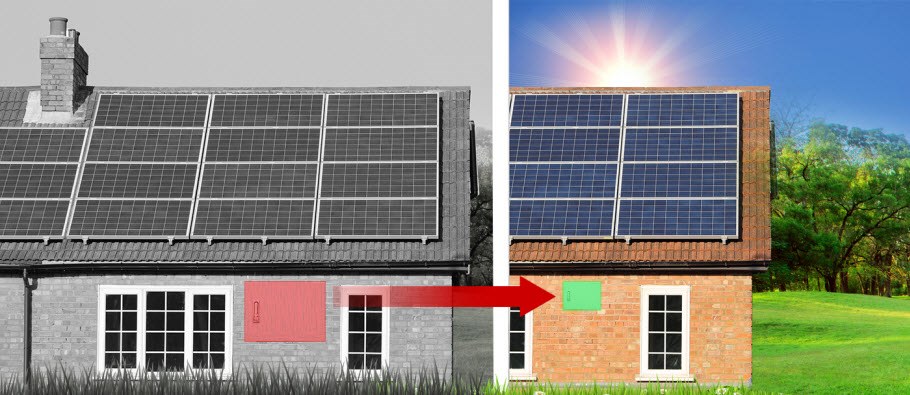Solar inverter: Before and after GaN
“PG&E has called a SmartDay event for Thursday, 07/28/2016 for your residence. Remember to reduce your energy use between 2 p.m. and 7 p.m. to save energy when electric rates are highest.”
Having lived in both Texas and California, I'm used to hot and sunny summer days. I’m also used to receiving the text messages from our local utility like the one above. I need to try my best to stay cool without running up my electric bill, but it’s not particularly easy when the temperature peaks between 2 p.m. and 7 p.m.
The hot sun comes with lots of cool benefits, however, and solar energy is one of them. Installing solar panels is a great way to supplement your electric power so you can stay comfortable and save money.
Sounds like a sales pitch? Not really. According to the Solar Energies Industries Association, in 2015, California led the nation by installing 3,266MW of solar electric capacity; that’s enough solar energy to power 3,494,000 homes. Still, each of these homes needs an inverter to convert the DC voltage from the panels to the AC voltages used inside.
These inverters need to be very efficient – why go through the trouble and expense of installing panels on your roof if you end up wasting some of the precious energy inside the inverter? They also need to be compact and cost-effective.
A typical block diagram of a solar inverter system is shown in Figure 1. The front end DC boost circuit in conjunction with a Maximum Power Point Tracking (MPPT) algorithm is used to optimize the panel voltage during various times of day and when panels are fully or partially blocked by clouds or other shading conditions. The second stage is a DC-AC inverter. The inverter converts the DC bus voltage to the appropriate 50 or 60 Hz voltages used by the load. Other variation of this system could include a battery storage system and/or a bypass switch for the boost circuit to further increase the overall efficiency when the sun coverage is at its fullest.
Figure 1: Typical solar inverter
TI’s gallium nitride (GaN) technology combined with TI’s digital power Piccolo™ microcontrollers, enable boost and inverter stages that can operate in excess of 100kHz, compared to traditional insulated gate bipolar transistor (IGBT) designs running at less than 20KHz. The higher frequency substantially reduces the size of large magnetics in the inverter and power optimizer (if using one). The inherent low switching losses of the GaN power stage make it possible to reach efficiencies of 99% and higher. Higher efficiencies mean smaller heat sinks and less need for cooling, and facilitate designs that are more compact and very cost-effective
Let’s rethink your solar inverter design together. Get started with TI’s GaN portfolio.
Additional resources
- Learn to optimize GaN performance with an integrated driver.
- Read about TI GaN reliability in the white paper, “A comprehensive methodology to qualify the reliability of GaN products” or the blog post, “Let’s GaN together, reliably.”
- Get started with the Digitally Controlled Solar Micro Inverter Design using C2000 Piccolo Microcontroller (MCU).
- Learn more about designing with solar inverters.


